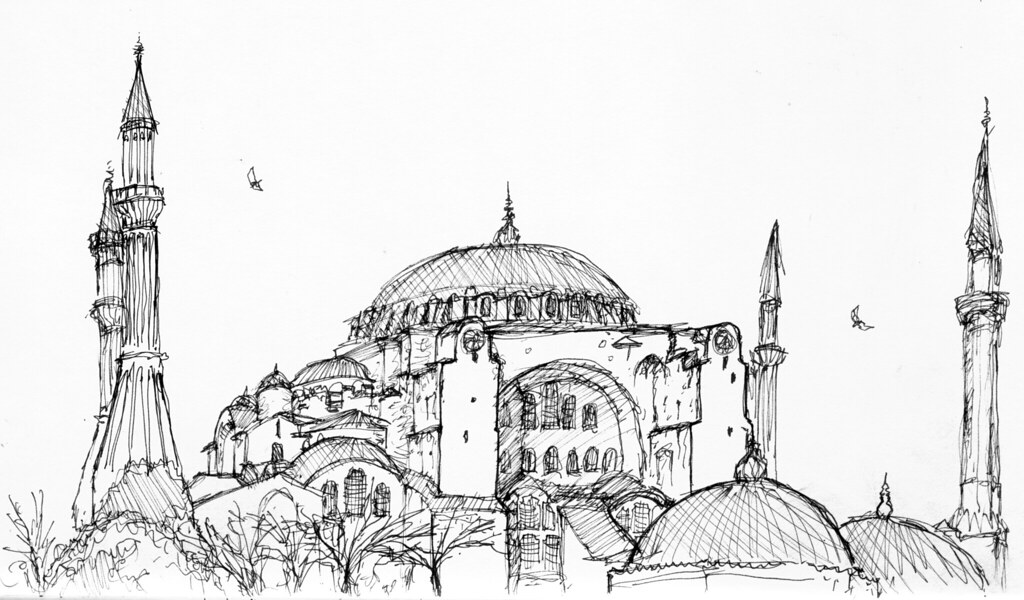Hagia Sophia

Consecrated in 537 AD, Hagia Sophia – which means Holy Wisdom – was the largest building in the world, fireproof, with four immense pillars held together with molten lead which supported four arches and lesser domes, creating a space so overwhelming it seems to defy the laws of gravity. Indeed, people were scared to enter it at first in case the dome collapsed. The designs were drawn up by Anthemius of Tralles, a noted mathematician, and Isidorus of Miletus, the last head of the Athens Academy. Colour was provided by stone and marble brought from other parts of the Justinian empire: red from the temple of Boalbek and green from Ephesus. At one time it was bright with golden ornaments and chandeliers. With the Turkish conquest in 1453, it became a mosque, with the addition of the corner minarets, and many of the decorations were concealed with whitewash. These were gradually restored by Thomas Whittemore, of the Byzantine Museum of America, after the building became a museum on the instructions of Mustafa Kemal Atatürk in 1933.



Comments